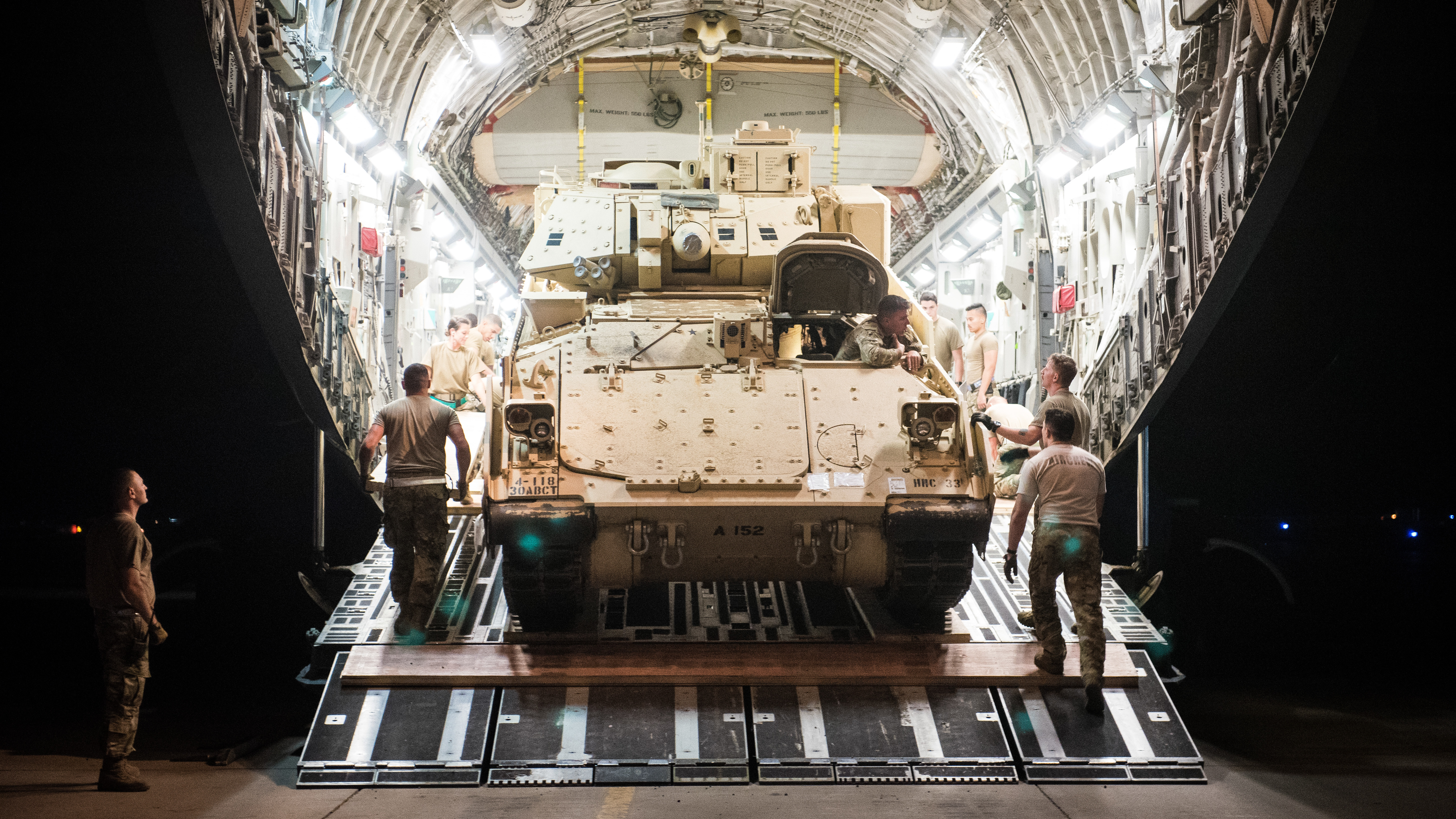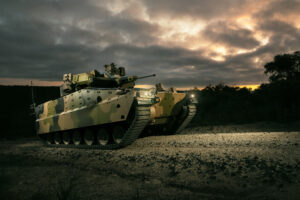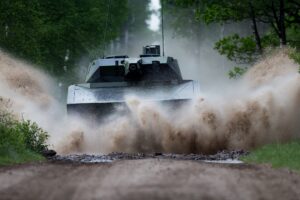
An M2 Bradley backs onto a C-17 transport.
WASHINGTON: If there is one thing that marks the Army’s approach to finally — and hopefully, successfully — building a replacement for the ancient Bradley Fighting Vehicle, it is something few close Army watchers traditionally associate with the service: flexibility, coupled with a willingness to listen to outsiders.
That was obvious during the July 23 afternoon briefing on the Optionally Manned Fighting Vehicle contract awards that Army generals held with the press. Unlike many past competition announcements, when Army leaders would basically read a statement and then offer usually dull and predictable answers to reporters, Maj. Gen. Ross Coffman, director of the Next Generation Combat Vehicles Cross Functional Team, and Brig. Gen. Glenn Dean, PEO for ground combat systems, went to some length to acknowledge the service had botched this effort in the past.

Hanwha “Redback” Infantry Fighting Vehicle
Coffman said the Army really needed “to be more inclusive and to allow us to develop capabilities that would be more scalable for the future.” On top of that, the service tried hard, Coffman said, “to lower the barriers to entry for foreign and non-traditional vendors…Because our more traditional approach tends to be structured in such a way that you not only had to be a US company, but generally it has to be a very large company to be able to get, get in the door. And of course, the prior activity was structured requiring the bidders to show up with a complete example upfront.”
That was a clear reference to the earlier failed effort to get companies to produce prototypes and deliver them to the Army for testing in 2019. Only one company met that requirement and the land service realized something had to change.
The “something” happened Friday when a relatively small defense company, Point Blank Enterprises, and an American subsidiary of a foreign company, American Rheinmetall Vehicles, were awarded concept definition contracts, along with American defense giants Oshkosh Defense and General Dynamics Land Systems. Several of the teams also include substantial foreign participation.
So Coffman, Dean and the rest of the Army acquisition team succeeded in attracting about half-dozen contractors to present concepts, including PBE, who’ve never made an armored vehicle before. The company is working with Keshik Mobile Power Systems to form a team of defense companies and small businesses for this program.
When PBE announced in April it would try for the OMFV, Keshik’s CEO, James Blackburn, said in a statement that the company planned to build “a transformational fighting vehicle platform that leverages robust mobility and agility through a distributed redundant hybrid electric drive train, best-in-class survivability, unprecedented exportable electric power, and scalability for maturing cross domain operational flexibility in real time.”

Rheinmetall Lynx
The fact that PBE — the self-described world’s largest distributor of body armor but not a maker of vehicles — bid to build an armored vehicle, may have been heavily influenced by the Army’s emphasis on building a weapon system resting on an open architecture. The fact that the system is supposed to be optionally manned may also have played an important role in PBE’s decision. Here’s how the Army described OMFV in its Friday release. “It is designed to operate with or without a crew and Soldiers under armor based on the commander’s decision, while also controlling maneuver robotics and semi-autonomous systems.”
And this is what Mark Edwards, PBE’s executive vice president, said in the statement: “We see the government’s non-traditional OMFV program approach as a perfect opportunity to continue to diversify PBE by leveraging our core competencies in collaborative digital engineering design management, survivability systems engineering, and forming and leading teams of some of the industry’s best large and small defense companies,”
The Army also chose bids with substantial foreign participation, meeting another of Coffman’s goals.
The Oshkosh Defense bid includes the US branch of South Korea’s Hanwha Defense, Israel’s Rafael and Plasan, as well as the US branch of Britain’s QinetiQ. The team includes a second American company, Pratt Miller Defense.
BAE Systems, the long-established US subsidiary of Britain’s BAE Systems PLC, is working closely with Elbit Systems of America, the Israeli subsidiary.
Finally, American Rheinmetall Vehicles’ Team Lynx marks the German defense giant’s return to the competition. ARV, strategically located in Sterling Heights, Mich., is working with an all-American team of Raytheon Technologies, L3Harris Technologies, Textron Systems and Allison Transmission.
Versions of the Lynx are already being bought by some American allies. The Hungarian Army ordered 218 locally-produced vehicles. And Australia picked it and one other competitor for its Land 400 Phase 3 program.
They got their competition. Now the Army has to make good on execution.




















